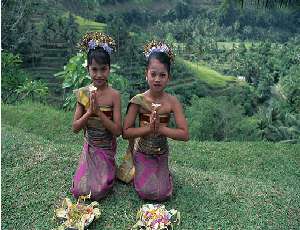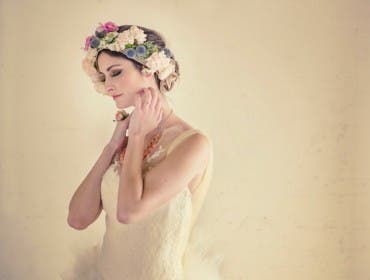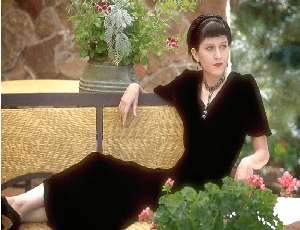There are times when posing people offers distinct advantages.
In Part 1: To Pose or Not to Pose People, we wrote that pictures of people give our travel photos personality and that “Nothing captures the spirit of a trip like captivating candid shots.”
But there are times when posing people offers distinct advantages.
After all, when you pose people, you can control and shape the image to your editorial and aesthetic preferences. You can take on the role of director, placing your subjects where you want them in relation to the light source and the background. You can take the time to compose carefully and determine exposure with precision. And you have the opportunity to take a series of shots, refining and perfecting the image or giving yourself a number of variations to choose from.

The challenge is to keep your posed shots interesting and fresh, whether you are photographing your travel companions or the local people you encounter on your trip. To create images of lasting visual value—not just fond memories of your travels—you’ll need to hone both your photographic and interpersonal skills.
Here are some suggestions for making the most of your posed travel photos of people:

Transition from candid to posed. Until you know for sure that your subject will work with you, go ahead and grab that candid shot while you have the chance. Then see if you can keep the person engaged for some further photography. If you are with family or friends, they are usually open to being moved around or told where to face or how to stand. Don’t hesitate to ask them to repeat something they just did spontaneously if you missed getting the candid. Most people are happy to ham it up for the camera.
With strangers, it helps to show a genuine interest in them and what they are doing. Begin a conversation with that shopkeeper or admire the woman’s hat and the odds are you’ll soon have them eager to pose for you. Let them get used to you as you start to photograph. Then, when everyone seems comfortable together, ask if you can position them where you want them. Or let your subjects suggest where and how they want to pose, which may open yet more doors for you.

Choose the right equipment. No one will want to stand around and wait while you rummage through your camera bag for some piece of equipment. If you realize that you want to take a photo of someone, be ready with the gear that’s right for the situation. Today’s superzoom lenses, like the Tamron 18-270mm, can deliver an incredibly long range of focal lengths. Anything similar, like the Nikkor 18-200mm lens, can be the only lens you will need for travel because you don’t have to carry extra lenses and you can adjust quickly from one situation to the next.
For people pictures, you’ll want a camera with a built-in flash unit that gives you some options for the intensity of the flash, such as the Canon G12, Nikon D7000, or the new Olympus E-P3. You also will want a camera with a fast recovery so you can shoot off a series of exposures in quick succession. Read 12 Great Travel Cameras.

Be clear about your purpose. Posed shots shouldn’t all look alike. While images of the family standing next to some sign have their place, try to go beyond those basics. Think carefully about the relationship between the people in your picture and the travel destination you are in. For example, if you want to show your wife in front of the Taj Mahal, it won’t do to get a tight shot of her, no matter how lovely she is. You’ll have to move back or have your lens at a wide-angle setting to show the surroundings.
On the other hand, if you want to capture the face of a fascinating local character, the background may not matter so much. In this case, you may want to fill most of the frame with that face, perhaps with a 100mm moderate telephoto lens setting so you can stand at a respectful distance from your subject. The clearer you are about the kind of image you want, the more likely you will be to make the right photographic choices.

Notice the background. For dramatic portraits, a good strategy is to place the person against a simple and contrasting background. A favorite way to do this is to pose your subjects against a dark doorway. This will put them in a theatrical kind of spotlight with a velvety backdrop behind them. No doorway in sight? Look for a simple wall.
Or try throwing the backdrop out of focus. Use a telephoto lens and a wide aperture setting, between f/2.8 and f/4, to narrow the depth of field; then focus carefully on your subject’s face. The wider the aperture and the further away your subject is from the background, the greater the blur. If you decide that you want to include a hint of the setting, use a middle-range f/stop that will soften the background but not blur it out completely.
Alternatively, if you want to take an environmental portrait that keeps the setting sharp, use a small aperture setting, a wide-angle lens setting and step back from your subject – but not too far or the people in your picture will become unrecognizable specks. A good solution is to set the people to one side of your frame so both the people and the setting can share the stage comfortably.

Vary your perspective. Don’t assume that you have to face your subject eye to eye. You may want a side view of that colorful character, or you may want him set against a street scene to his side. Try looking at people from above or below, especially if you want a particular backdrop. With posed shots, you can move around your subjects or ask them to move so you get the composition you prefer.
Also, think about including props in your images. You may want the waiter to be carrying a tray of food to a table. Or you may ask the artist to stand next to one of his creations. With children, you may want to squat down with them to see the world from their perspective. Keep reminding yourself that there are many ways to see the same subject and use the time you have to explore them.

Pay attention to lighting and exposure. With images of people, you will want their features to be clearly visible and well defined. That doesn’t mean you want them facing the sun, especially if that causes them to squint. Cloudy or hazy days are helpful, when you have them. On sunny days, if at all possible, try getting your subjects into the shade, where the diffused light will be more uniform and flattering.
Or turn them so they are backlit, with the sun or a bright background behind them. This puts their faces in the shade, but be careful: if you expose for the background, your subject will become a silhouette. Use your fill-flash to add some illumination on their faces. This is a good way to equalize brightness on your subject and the backdrop and get better exposure, especially in bright sunshine or at sunrise and sunset.

Also, as you travel, notice the differences in people’s skin tones and take the time to get your exposure right. Meter carefully and bracket toward underexposure to retain good color and detail for darker skin tones.
Posing the people in your travel pictures opens the door to new photographic possibilities. Our experience has been that it also opens the doors of friendship. Many is the time that the people we photograph invite us inside to sample some food, meet their family or just introduce the strange Americans who are interested in them. You’ll enjoy your travels that much more if you make the effort to pose the people you meet on your journey.
Allen Rokach and Anne Millman are co-authors of “Focus on Travel: Creating Memorable Photographs of Journeys to New Places” by Abbeville Press. Rokach, a longtime magazine and assignment photographer, now teaches at Workshops@Adorama and other venues. His website is www.allenrokach.com.



